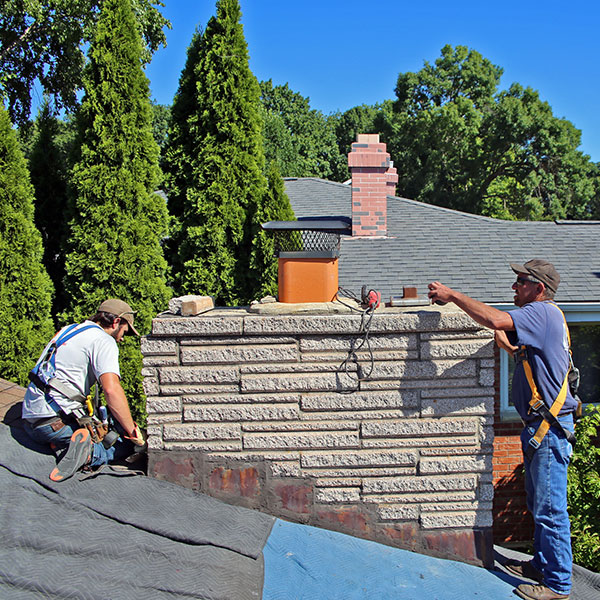The Ultimate Guide to Chimney Sweep San Jose Techniques for a Safer Home
The Ultimate Guide to Chimney Sweep San Jose Techniques for a Safer Home
Blog Article
The Ultimate Smokeshaft Cleaning Checklist for Homeowners
A well-maintained chimney not just boosts the overall functioning of your home heating system but additionally mitigates the risk of potential risks such as fires and carbon monoxide leakages. Chimney Sweep San Jose. From evaluating the chimney structure to eliminating creosote buildup, each step plays a vital duty in guarding your home and liked ones.
Smokeshaft Assessment and Assessment
When performing a smokeshaft inspection and assessment, it is essential to completely examine the exterior and interior parts for signs of damage or buildup. The interior of the chimney need to be looked for any type of blockages, such as bird nests or excess soot, which can posture a fire danger. Inspecting the flue for creosote build-up is vital as this very flammable compound can trigger a smokeshaft and stir up fire. Furthermore, evaluating the condition of the smokeshaft liner is important to guarantee correct air flow and safety.

Exterior Upkeep and Repair Works
Checking the exterior of the smokeshaft for any architectural problems, such as fractures, loosened bricks, or indicators of water damages, is crucial in ensuring the total security and longevity of the chimney. Frequently inspecting for any type of splits in the mortar or blocks can aid protect against water from seeping in and creating damages to the chimney framework. Addressing these exterior maintenance issues in a timely fashion can prolong the life of your smokeshaft and protect against pricey fixings down the line.
Cleaning the Smokeshaft Flue and Damper
To guarantee appropriate operating and safety and security of your smokeshaft, normal cleaning of the chimney flue and damper is essential. The smokeshaft flue is the flow that allows smoke and gases to exit your home, while the damper is a movable plate that controls air flow. Begin by inspecting the flue for any obstructions such as bird nests, particles, or creosote buildup. Utilize a flashlight to look for any type of indicators of damage or blockages. Next, thoroughly get rid of any type of particles using a chimney brush or vacuum cleaner developed for this purpose. Make sure that the damper opens and closes smoothly, as an appropriately operating damper aids manage airflow and avoids drafts when the chimney is not in use. Additionally, take into consideration mounting a smokeshaft cap to stop debris and animals from going into the flue. Normal maintenance of the chimney flue and damper not just improves the effectiveness of link your smokeshaft however additionally lowers the risk of smokeshaft fires and carbon look at this web-site monoxide gas build-up in your home.
Removing Creosote Accumulation Safely
Just how can homeowners safely get rid of creosote accumulation from their smokeshaft to preserve its optimum functioning and security? Creosote, a result of shedding timber, can gather in smokeshafts over time, positioning a fire risk if not correctly handled.
There are different methods to eliminate creosote, depending upon the build-up's extent. For light creosote build-up, using a smokeshaft brush or a homemade creosote cleaner made of equal parts water and vinegar can be effective (Chimney Sweep San Jose). For thicker deposits, professional smokeshaft cleaning company might be essential
It's crucial to wear protective equipment such as handwear covers, goggles, and a mask when taking care of creosote to prevent skin irritation or breathing. Additionally, proper air flow while cleaning the chimney is important to avoid breathing in harmful fumes. Routine smokeshaft evaluations and cleansings can aid stop creosote build-up, making certain the safety and security and performance of your smokeshaft.
Fire Safety And Security Safety Measures for Chimney Owners
Regular smokeshaft evaluations by certified specialists are important to determine any type of clogs, creosote accumulation, or structural problems that can pose a fire risk. Installing a smokeshaft cap can avoid particles, animals, and rainwater from going into the smokeshaft and causing clogs or damage. Furthermore, smokeshaft this content owners need to have a spark arrestor or smokeshaft trigger arrester mounted to prevent stimulates from running away and possibly igniting neighboring combustibles.

Verdict
Finally, routine chimney maintenance is essential for making certain the safety and effectiveness of your fire place. By adhering to the ultimate smokeshaft cleansing checklist detailed in this short article, house owners can check, clean, and fix their chimney effectively. Appropriate maintenance not only decreases the risk of chimney fires yet additionally extends the life-span of the chimney system. Bear in mind to focus on safety and security and schedule regular smokeshaft examinations to keep your home warm and safe.
Examining the chimney cap and crown for any type of damages is essential to avoid water from leaking into the smokeshaft and creating additional deterioration.
Regular upkeep of the smokeshaft flue and damper not only improves the efficiency of your chimney however additionally minimizes the danger of smokeshaft fires and carbon monoxide build-up in your home.
Routine smokeshaft inspections and cleansings can assist stop creosote accumulation, making certain the safety and security and performance of your chimney. (Chimney Sweep San Jose)
Setting up a chimney cap can avoid debris, animals, and rainwater from entering the smokeshaft and triggering clogs or damage. Correct maintenance not only minimizes the threat of chimney fires but likewise extends the life expectancy of the chimney system.
Report this page